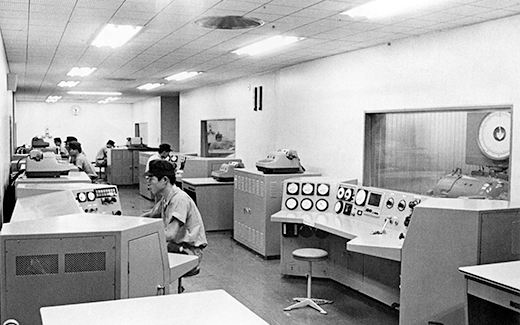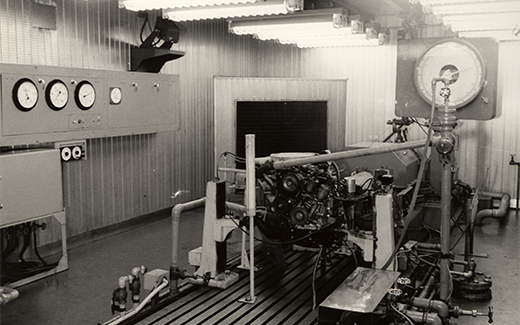It had been two years since Toyo Kogyo concluded the license agreement for the rotary engine technology development with the German companies NSU and Wankel. Engineers around the world were in fierce competition to commercialize a rotary engine, which was considered “a dream technology.” To achieve the commercialization ahead of others, Toyo Kogyo formally inaugurated the rotary engine research department in April 1963, taking the up until then “patched together” research committee to a full fledged research department dedicated to the rotary engine.
Designated as the director of the new department was Kenichi Yamamoto, who had until then taken the lead in a new vehicle development project as the deputy director of the design department. This appointment exactly coincided with the climax of his previous project—the development of the Familia, a compact car that was expected to determine the future of the company. Accordingly, his transfer to the preceding research department was like a bolt out of the blue.
At any rate, Yamamoto had no time to spare to be upset or disappointed, since he had to rush to gather members of the rotary engine research department that had just been established. To assemble the members, he negotiated with the department leaders in charge of research, design, experiments, and material research, and managed to form a team of 47 engineers, including himself.
“From tomorrow, our team of 47 engineers should think of this laboratory as our home, where the rotary engine must be on your minds at all times, whether you are awake or asleep.” Yamamoto said, during his speech at the introductory party and meeting for the new department, which was held at a restaurant in Hiroshima City. He delivered his speech before the 47 young members, whose average age was 25. Later, Yamamoto shared his recollections: “I gave the speech at the age of 40. Although I was at my peak at the time, I now wonder how I made such a sentimental speech.” However, his passionate, powerful words won the hearts and minds of the team members. Yamamoto compared the mission of these engineers, who were venturing into the uncharted territory of rotary engine commercialization, to that of the Ako Roshi (Ronin of the Ako domain). The Ako Roshi were a legendary band of 47 samurai warriors who were closely united and dedicated their lives with unparalleled loyalty and perseverance to the cause of avenging what they saw as the unjust death of their master. In response to his appeal, all the young members were excited and pledged to work in close solidarity with each other.
Since then, the rotary engine research department had upheld the motto: “The rotary engine must be on your minds at all times, whether you are awake or asleep.” Eventually, as the research made progress, it was changed to incorporate more stringent requirements: “Be sure to place a pencil and notebook beside your bedside before you go to sleep,” and “Come up with five or more ideas per person every week.” Yamamoto also took on the role of an engineer under the same challenging conditions as the young members, to lend them a hand in their uphill battle to commercialize the rotary engine.
To develop the dream engine, they had to tread a long and thorny path. These engineers were confronted with a series of technological challenges that went far beyond their imagination. They often felt that they were at the end of their tether and that it might be impossible to resolve the various problems that arose. Nevertheless, the team persistently overcame these challenges step by step, and their efforts finally paid off. In 1967, Toyo Kogyo succeeded in making the debut of the world’s first mass production car powered by a rotary engine. Behind the success lay the close solidarity and strong tenacity of the engineers, who were united behind the motto: “The rotary engine must be on your minds at all times, whether you are awake or asleep.”



Rotary Engine Research Department, 1967

Rotary Engine Research Department (1967)